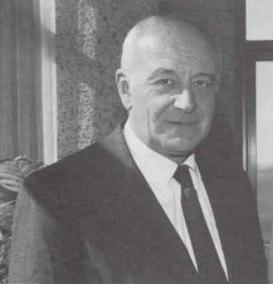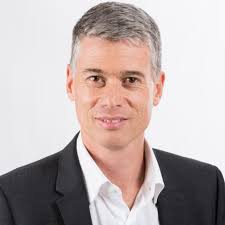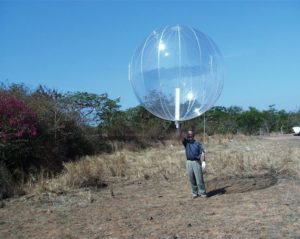Historical
1968! 1968 is the year of revolutions… and climate science is no exception. In 1968, the Laboratoire de Météorologie Dynamique was created from the merger of the Laboratory of Lower Atmosphere Physics, directed by Paul Queney, and a group formed by Pierre Morel, at the time a young theoretical physics professor who knew little about the physics of the atmosphere.
It is a scientific paradigm revolution : meteorology makes its transition from a natural, descriptive science to a “hard” science, based on physics and mathematics. Dynamic meteorology is the science of the atmosphere in motion. It is based on three pillars that have been the DNA of the laboratory for 50 years: the measurement of atmospheric motions, the numerical simulation of planetary flows, and data analysis.
In July 1968, the LMD, a CNRS unit, is created and Yves Rocard allocates it premises at the Ecole Normale Supérieure (ENS) which the LMD joins in 1970. In 1974, the LMD also moves to the Ecole Polytechnique, which had just moved to Palaiseau, and in 1991, to the Pierre and Marie Curie campus of Sorbonne University. As soon as it moves to the Ecole Polytechnique, the LMD acquires a design office, a mechanical workshop and development, testing and calibration facilities which enable the LMD to position itself as a major laboratory in the field of instrumental development and experimental meteorology.
In the mid-1970s, the scientific community sounds the alarm on climate change and its human origins. To answer the ever more precise questions about the alarming evolution of the climate, Robert Sadourny, who succeeded André Berroir as head of the laboratory in 1985, helped to build the Pierre Simon Laplace Institute (IPSL) created in 1994, thanks to the impetus of another visionary, the late Gérard Mégie. The LMD is one of the founding laboratories of the IPSL, which vocation is to federate the resources and expertise of laboratories in the Ile de France region working on climate and the environment in order to better understand the functioning of the “Earth System” as a whole and other planets in the Solar System. In 1998, Claude Basdevant, who had succeeded Robert Sadourny three years earlier, has to manage the transition from the status of a CNRS Unit to that of a Joint Unit with the Ecole Normale Supérieure, the Ecole Polytechnique and the Pierre and Marie Curie University, and has to negotiate new premises with the three new university tutelages of the LMD. Finally, in 2010, Vincent Cassé, who has just succeeded Herve Le Treut as director of the LMD, must manage the positioning of the laboratory within the three Initiatives of Excellence (IDEX) on which the LMD depends, Paris Sciences Lettres, Sorbonne University and Paris Scalay, whose aim is to create world-class multidisciplinary higher education and research complexes.

Pierre Morel (right), Jacques Blamont (left) and Jean-Pierre Causse (centre), in 1963, then members of the CNES scientific directorate.
Originally, around Paul Queney and Pierre Morel, the aim is therefore to integrate meteorology and climate science into “hard” science. This involves developing numerical modelling and developing and conducting measurement campaigns. This approach is undertaken as part of the EOLE programme, involving the French (CNES) and American (NASA) space agencies. A flotilla of sounding balloons was launched from September 1971 to June 1972 into the southern hemisphere jet stream (479 balloons at an altitude of 7,000 metres), where it drifted for several days, followed by a meteorological satellite. In this context, Robert Sadourny was responsible for developing numerical modelling in the newly created laboratory, Olivier Talagrand for data assimilation expertise and Gilles Sommeria and Joël Ovarlez for preparing the measurement campaigns. This experiment made it possible, on a scientific level, to link temperature measurements to those made by satellites and to better understand the atmospheric circulation and energy dispersion in the atmosphere, thanks to the development of a general atmospheric circulation model. The EOLE programme is still the best example of the scientific approach adopted at LMD: an integrated approach combining observations, numerical simulation, theoretical developments and data analysis.
The young researchers who then accompanied the visionary project of the founding fathers of the laboratory later became the architects of new disciplines within the meteorological and climate sciences. Robert Sadourny became one of the pioneers of numerical modelling in meteorology, and it was at the LMD that he created one of the first atmospheric general circulation models in 1980, with Katia Laval. Olivier Talagrand applied new knowledge on non-linear and chaotic systems to data assimilation and studies on the theoretical predictability of weather. It is thanks to this work, which forms the foundations of today’s operational systems, that weather forecasting has undergone the revolutionary improvement we have seen in the last 30 years. His scientific work has been celebrated by numerous international scientific awards.
Drifting sounding balloons were subsequently widely used by the LMD for the study of atmospheric movements in the lower layers in many regions of the world: French Polynesia, the Seychelles, India, West Africa, the Mediterranean (see photo 2). At the end of the 1980s an experiment along the lines of EOLE but dedicated to stratospheric dynamics and ozone chemistry was designed, after maturing for more than 20 years with the CNES. It will be the STRATEOLE-VORCORE campaign (2005) during which drifting balloons will be released into the polar vortex from the American Mc Murdo base in Antarctica. The LMD’s presence in Antarctica continues, in collaboration with Météo-France to contribute to the validation of space missions.
| Deployment of drifting sounding balloons for the study of movements in the lower atmosphere, in 1973 from Rangiroa (French Polynesia) by Pierre Morel (left photo) and in 1999 from Goa (India) by Robert Sadourny (right photo). |
The LMD progressively plays a major role in the development of space missions for Earth observation. Starting in 1974, the LMD developed the GEISA spectroscopic database, giving France and more broadly Europe autonomy from the then partially classified American HITRAN base. This work is the basis of the modelling of radiative transfer in the infrared, which rapidly became a field of excellence for the LMD and the source of inspiration for many space missions for the measurement of atmospheric composition (water vapour, gaseous pollutants, greenhouse gases). The LMD played a leading role in the development of the European METEOSAT geostationary satellite programme, the first of which was launched in 1977. The LMD is at the heart of the Megha-Tropiques space mission, a joint mission between CNES and its Indian counterpart ISRO, launched in 2011. The Megha-Tropiques mission, which very name embodies Franco-Indian cooperation (Megha means “cloud” in Sanskrit), aims to study the tropical water cycle and carries the instrument, ScaRaB, developed at the LMD. It is the only Earth observation research instrument currently in operation, built in a French laboratory. ScaRaB has embarked on Megha-Tropiques and on two other Russian satellites. It can measure with great precision the energy entering and leaving the atmosphere at different wavelengths (photo 3). The list of space missions to which the LMD has contributed is long. One of them is the international IASI (Atmospheric Infrared Sounding Interferometer) programme, including satellites launched in 2006 and 2012 and three others planned for operational meteorology and the study of atmospheric chemistry and climate.

ScaRaB instrument developed at the LMD, three of which were embarked on satellites: two Franco-Russian missions 1994-95 (RESURS) and 1998-99 (METEOR) and the Franco-Indian mission Megha-Tropiques 2011-present.
Finally, in the 1980s, under the impetus of Pierre Flamant, the LMD developed lidars, an instrument for active laser remote sensing of the atmosphere, particularly for observing aerosols and clouds and measuring wind. The LMD is a key player in numerous space projects integrating this technology (French-American CALIPSO project, European ADM-AEOLUS and EarthCare projects). It is on the basis of lidar technology that the LMD, with the support of Claude Basdevant, developed in 1997 within the IPSL, the SIRTA experimentation site, an observation service dedicated to research on clouds and aerosols (photo 4). The instrumented site is located on the site of the Ecole Polytechnique. In 2009, the LMD began designing lidars for measuring the concentration of greenhouse gases (methane, carbon dioxide). It contributes to the ASCOPE space project submitted to ESA for the measurement of CO2 concentration by lidar. Although the project has not yet led to a decided mission, it has served as a basis for the design of MERLIN, the first Franco-German mission currently being carried out for a launch in 2021 which will measure atmospheric methane concentration using a lidar.

Laser beam emitted by the IPRAL lidar deployed by the LMD on the SIRTA experimental site, the IPSL infrastructure for the study of aerosols and clouds.
Finally, for nearly 20 years the LMD has contributed to the European COPERNICUS (formerly GMES) programme for the construction of a European service system for monitoring air quality on the one hand and climate on the other.
The second pillar of the LMD is numerical modelling, initiated in 1965 with the development of a general circulation model in anticipation of the EOLE project, a first version of which was launched in 1984. The development of the LMD general circulation model stimulates the development of a specific land surface model, called SECHIBA, in order to calculate the energy and water balance of terrestrial ecosystems. The first version of the model was developed at the LMD by Katia Laval and Robert Sadourny. It was during an internal seminar of the LMD, held in the Royal Abbey of Fontevaud in 1990, that the decision was taken collectively to make this dynamic code the backbone of the future LMD climate model. From 1995, the LMD model, called LMDZ, began to be used for climate studies (photo 5). Since then, it has continued to evolve. LMDZ is the atmospheric component of the IPSL’s “Integrated Climate Model”, used in the international research effort on future climate change, and which simulates the dynamics of all components of the Earth system: the atmosphere of course, but also the ocean and the continental surface, including the cryosphere. Ongoing work is being carried out on evaluating the model’s performance, which enables the simulation of observations made by instruments on board satellites.
Nevertheless, although LMDZ is at the heart of the study of the Earth’s climate, its first applications are Martian. The LMD model is the first to simulate an entire seasonal cycle on the Red Planet. These versions of LMDZ were developed largely in connection with space exploration of the solar system (Mars, Titan, Venus), and more recently with the search for extra-solar planets.
Since 2009, the LMD has been devoting a major effort to the development and validation of a new dynamic core, called DYNAMICO. It exploits complex mathematical formulations, an icosahedral-hexagonal mesh, to overcome the limitations of LMDZ and make the most of modern means of massively parallel computing. This effort has its origin in the theoretical work of Robert Sadourny and has benefited crucially from the conceptual clarification made in the work of extending LMDZ to deep planetary atmospheres (Saturn, Jupiter).

Mesh of the LMD general circulation model, LMDZ.
Modelling at the LMD also means the chemistry-transport code, known as CHIMERE. In 1996, the LMD initiated its development following the various European laws and directives such as the Convention on Transboundary Pollution and the 1996 French air law, which defined a framework for the study and regulation of air quality. The need to develop numerical tools in order to better understand the physico-chemical processes at the origin of air pollution, but also to forecast pollutant peaks a few days beforehand while clearly identifying the causes in order to limit them where possible, motivated this development, which has been ongoing ever since, in collaboration with LISA and INERIS.
In half a century, the LMD, supported by its prestigious tutelage, has become a leading international laboratory, attracting students and researchers from all over the world. It is a pillar of atmospheric modelling in France, has many contributors to IPCC reports, has coordinated original measurement campaigns and has contributed to many other space campaigns and missions. Although the laboratory has evolved considerably since its creation, broadening its themes, renewing its tools, increasing interactions and collaborations with other disciplines, it has remained faithful to the vision, always fruitful (or always relevant) of its founding fathers.
Successive directors of the LMD
-

Pierre Morel
1968 – 1976
- ENS 1952 - Professor of Physics at the University. Founder of the LMD in 1968 to give meteorology a real scientific dimension. He launched the LMD both in the observation of the atmosphere and, as a precursor, in numerical modeling. He left the LMD in 1976 to become the scientific director of CNES. In 1980 he became the first chairman of the World Climate Research Program.
-

André Berroir
1976 – 1985
(1933 - 2010) - ENS 1953 - Professor of fluid mechanics at the University. Creator of the Centre de calcul vectoriel pour la recherche. He left the LMD in 1976 to join the CNRS where he was Director of the TAO department and of the INSU, then President of the French Polar Expeditions and Mediator of the CNRS.
-

Robert Sadourny
1985 – 1995
- ENS 1959 - Director of Research at the CNRS, Doctor of State in Physical Sciences, lecturer at the Ecole Polytechnique. A specialist in numerical fluid mechanics, he was the initiator and architect of the LMD's General Circulation Model of the Atmosphere. He trained a whole generation of climatologists.
-

Claude Basdevant
1996 – 2001
- ENS 1968 - Professor of applied mathematics at the University, lecturer at the Ecole Polytechnique. Specialist in turbulence in geophysical flows. He will be Chairman of the Department of Mechanics at the Ecole polytechnique.
-

Hervé Le Treut
2002 – 2008
- ENS 1976 - Director of Research at the CNRS then Professor at the University and Professor at the Ecole Polytechnique, Member of the Academy of Sciences. He is an internationally recognized specialist of climate in its physical and mechanical dimensions and its numerical modeling. He left the direction of the LMD to become the director of the Institut Pierre Simon Laplace.
-

François Vial
2009 – 2010
(1954 - 2021) - Director of Research at the CNRS, Doctor of State in Physical Sciences. Specialist in atmospheric tides and the stratosphere, he built the Strateole and Concordiasi experiments. He is in charge of the INSU mission for space and European policy afterwards.
-

Vincent Cassé
2010 – 2016
- X1981 - General engineer of the Ponts des Eaux et des Forêts. Doctor of the University Pierre and Marie Curie. Specialist in weather nowcasting and ocean-atmosphere coupling.
-

Philippe Drobinski
2016 – 2024
- ECLille 1994 - CNRS Research Director and Professor at Ecole Polytechnique. He studies regional climate variability and trends in the Euro-Mediterranean region with a particular interest in water and energy resources. In 2019, he created and directs the interdisciplinary centre Energy4Climate (E4C). Current director of the LMD



